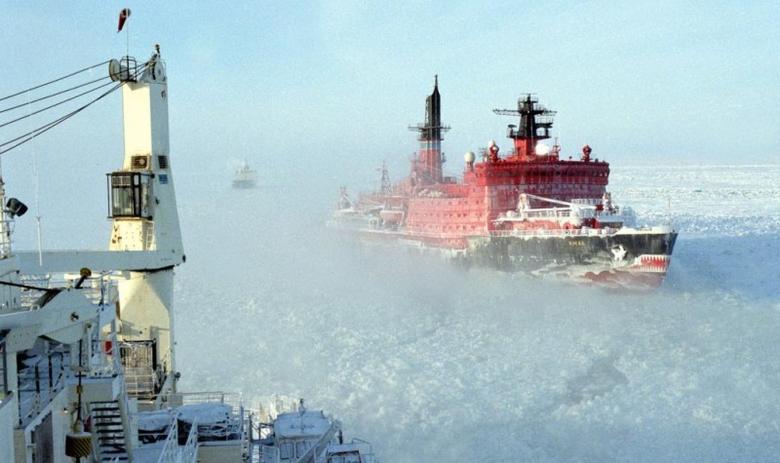
CHINEESE MONEY FOR RUSSIA

GP wrote, Chinese investors are accelerating their expansion into Russia's oil and gas sector through the acquisition of stakes in key industry projects.
The Russian government recently approved the sale of a 9.9% stake in the Yamal LNG project to Silk Road Fund Co. Ltd., one of China's largest investment funds. The project involves the construction of an LNG plant at Sabetta, northeast of the Yamal Peninsula. It is considered a promising venture by its foreign investors.
Among the major shareholders of Yamal LNG are local gas producer Novatek (50.1%), Total (20%) and CNPC (20%). The Silk Road Fund has become the second Chinese strategic investor in the project, after China National Petroleum Corp. (CNPC) provided $5 B of investment for Yamal LNG. Under the terms of the agreement, the Silk Road Fund will provide approximately $800 MM for the implementation of the project over the next several years.
According to an agreement signed May 3 between Yamal LNG, the Export-Import Bank of China and China Development Bank, the latter bank will provide loans to the project in the volume of €9.3 B and 9.8 B CNY for a period of 15 years. Yamal LNG was unable to apply for loans with EU and US banks because one of the major shareholders of Novatek, Gennady Timchenko (with a 23.49% share), is reportedly aligned with Russian businesses on the EU and US sanctions lists.
Project scope and market.
The plant will have three trains with a total capacity of 16.5 metric MMtpy of LNG. Feedstock will come from the South Tambeyskoye gas field, which has total reserves of 926 Bcm of gas. The first train is expected to be operational by the end of 2017, and full capacity is targeted for 2021. To date, the plant is around 50% complete. The project also involves the construction of an international airport and the multifunctional Sabetta seaport, which will help launch regular shipments of Yamal LNG production to major customers.
According to an official spokesman for Alexander Novak, Russia's minister of energy, the majority of the LNG that will be produced at the Yamal plant will be supplied to China. However, a portion of the LNG produced in the future will be directed to other Asian markets and be transported through the Northeast Passage, an Arctic shipping route connecting the Atlantic and Pacific oceans and bordered by the Russian and Norwegian coasts.
Over the long term, the plant's production will be targeted for the EU market, which is expected to see a gas shortage in the future. This shortage will be mainly due to the predicted decline of supplies from Norway and The Netherlands. The two countries are the EU's leading gas producers; however, their reserves have significantly declined in recent years.
According to Evgeny Kot, general director of Yamal LNG, almost all of the LNG that will be produced at the Yamal plant has been booked by customers. Kot added that 83% of future production will be supplied to Asian-Pacific markets, particularly China. CNPC has already booked 3 MMt of LNG to feed its domestic market.
The partners have agreed that Daewoo Shipbuilding and Marine Engineering will build up to 16 ARC7 double acting ice-class gas tankers for the project. Tankers will be chartered and operated by Sovcomflot, one of Russia's largest maritime shipping companies.
According to Russian Ministry of Energy analysts, the Yamal LNG project has a number of competitive advantages compared to its major rivals. Among these advantages are its low cost of gas production and liquefaction due to specific energy savings amid the conditions of low mean annual Arctic temperatures. In addition, the transport infrastructure of the project on the Yamal Peninsula has great potential for further expansion, which could encourage an increase in the plant's production capacity in the future.
To date, the Russian government has provided Yamal LNG's shareholders with beneficial conditions for the implementation of the project. All equipment supplied for the project (including imported equipment) has been exempted from taxes. Also, 150 B RUB ($2.5 B) has been allocated from the National Welfare Fund, one of Russia's largest state-owned investment funds, at a low rate, among other benefits.
Taking into account the Chinese loans, investors have been able to attract almost the entire required amount of funds for the implementation of the project. It is expected that the last financial tranche may be provided by Sberbank, Russia's largest bank. Sberbank is owned jointly by the state and by a consortium of other Russian banks. However, this financial transaction will take place only under the direct order of the Russian government and the approval of President Vladimir Putin.
Paul Zavalny, president of the Russian Gas Society, a public association uniting Russian gas producers, stated that the Asia-Pacific market offers a fairer price for gas than the EU market. China is expected to lead the growth of the Asia-Pacific market over the next several years as it seeks to reduce dependence on coal. According to Zavalny, China will overtake the EU states in gas consumption by 2030.
The increase of LNG supplies to China will help Russia achieve the implementation of one of its most ambitious goals for the next several years by increasing its share in the global LNG market up to 15%.
At the same time, despite the optimism of investors and the Russian government, the project's payback period may be significant due to currently low global gas prices. The price levels are significantly lower than those originally forecast by the partners.
According to Alexander Novak, who oversees the implementation of the project for the Russian government, gas prices in Asia are approximately $5/1 MMBtu, which is lower than the price of recoupment ($6/1 MMBtu) for the project. Due to this price disparity, investors are looking toward the gradual recovery of global oil prices, the growth of global gas demand (primarily in Asia) and the suspension of new LNG projects to help justify the Yamal LNG project investment.
Mr. Novak commented, "If global oil and gas prices do not change, then the payback period of Yamal LNG will increase significantly, as basic calculations of the project were made at $10/bbl. Currently, the partners are not ready for any cost reductions; however, according to our forecasts, global oil prices will continue to recover during the next several years, which should contribute to the growth of global gas prices."
To successfully implement the project, Novatek has not ruled out the possibility of building another LNG plant in Russia. This plant would likely be located on the Gydan Peninsula, along Siberia's Kara Sea coastline.
Potential threat.
According to analysts at Russia's Higher School of Economics, the attraction of Chinese investors to Russia's domestic LNG and oil industry may be associated with significant risks for Russian energy security. This could lead to a similar situation seen in Kazakhtsan and other Central Asian states, where Chinese investors already control 30%–40% of the local oil and gas fields. Due to Western sanctions, Russia is forced to borrow funds from Chinese banks, which may result in the transition of control of some of Russia's largest oil and LNG assets to China.
In addition, despite the fact that China remains one of the world's largest consumers of LNG, focusing on the Chinese market may result in the loss of other attractive partners in the Asia-Pacific region, such as Japan and South Korea. The two nations may offer higher prices than China for Russia's LNG.
Another uncertainty arises from the fact that, despite its large demand for energy, the stagnation in China's economy could result in a significant decline in demand growth over the next several years. Finally, in recent years, China has signed long-term contracts for gas supplies from Turkmenistan and Kazakhstan, so it already possesses diversity of supply.
Amid China's ever-growing presence in the Russian oil and gas sector, several Russian oil and gas producers are considering submitting a petition to the national government, asking it to tighten foreign access to national oil and gas reserves out of concern for national security.
China still needs more LNG.
According to the Russian Ministry of Energy, Chinese demand for LNG will continue to gradually grow by at least 2020, despite the fact that LNG imports to the country fell by 1.1% on the year in 2015, according to a report by the US Energy Information Administration. The Chinese Ministry of Economy expects demand to recover in the second half of 2016.
Additional impetus for the development of the LNG industry in China was provided by the government, which previously required LNG operators to sign long-term supply contracts prior to the construction of LNG terminals. At the same time, the majority of local demand will continue to be met by imports, as the country's domestic production remains relatively small.
The situation is amplified by the fact that the majority of Chinese LNG terminals are concentrated on the country's coast, close to regions where demand for gas is highest. Construction of gas pipelines to these cities is economically unprofitable, which makes additional LNG imports crucial for the country. China has 13 LNG terminals with a combined capacity of 42 MMtpy and is planning to build several more to boost its total import capacity.
Demand for LNG in China will continue to grow due to the country's plan to improve its fuel quality, with the aim of reducing sulfur emissions to 50 ppm, compared to the present 150 ppm for cars. A further reduction to 10 ppm could be required by the end of 2017. The new rules will encourage the use of gas as an alternative fuel. It is expected that the Chinese car fleet operating on gas will rise to 2.5 MM units by 2017 and to 5 MM by 2020.
-----
Earlier:
YAMAL LNG CREDIT LINE: EUR 3.6 BLN
RUSSIAN - CHINESE TRANSACTION







